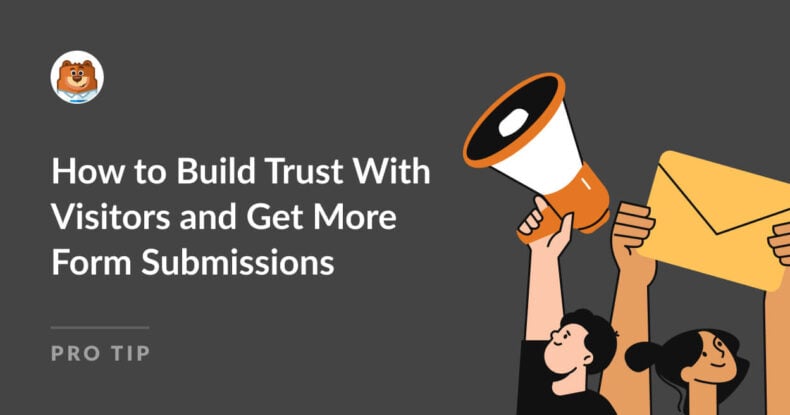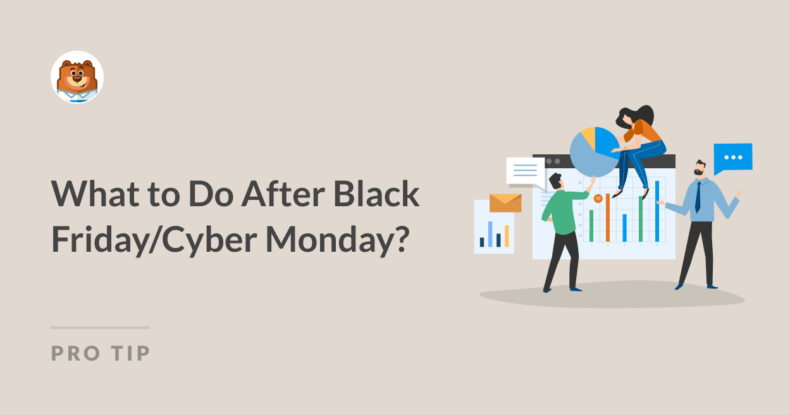AI Summary
Building trust with your website visitors is like trying to win over a cat — it’s all about being approachable, reliable, and never making any sudden moves. But unlike cats, your visitors are actually looking for reasons to trust you.
All you have to do is give them what they’re looking for!
Keep reading to learn some practical (and fun) ways to build trust with your visitors so they’re not just clicking away from your forms, but actually filling them out with confidence.
How to Build Trust With Visitors and Get More Form Submissions
- 1. Show Social Proof
- 2. Be Clear with Your Intentions
- 3. Make Your Forms Look Legit
- 4. Sprinkle in Some Personality
- 5. Use Trust Signals
- 6. Make the Process Frictionless
- 7. Follow Up with Gratitude
- FAQ
1. Show Social Proof
Social proof is like having your friends vouch for you at a party. It’s way easier to make a good impression when others are already singing your praises.
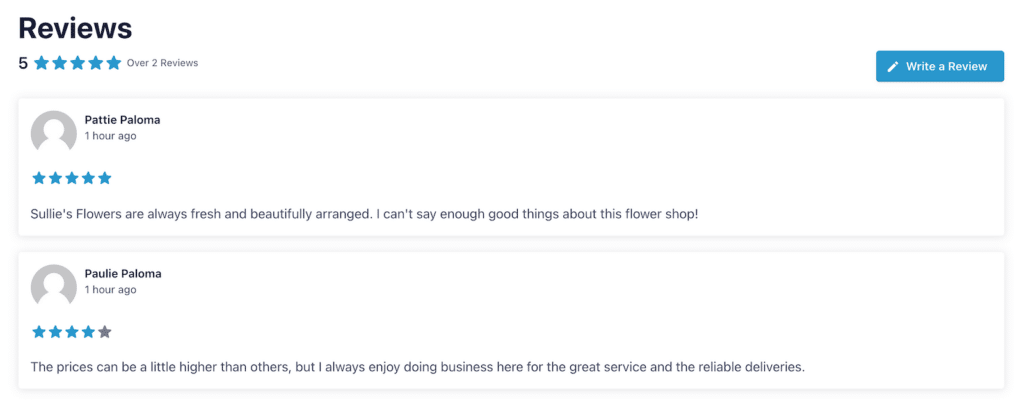
Here are a few ways to make your site visitors feel like they’re joining a crowd of happy customers:
- Customer Testimonials: Share quotes from satisfied users. Use a WPForms testimonial form to gather these easily.
- Star Ratings and Reviews: Show off your top ratings with widgets or embeds.
- Case Studies: Highlight real stories of people who’ve benefited from your product or service.
With WPForms, you can easily create a form to collect customer feedback or success stories to keep those fresh testimonials coming in.
Ready to try? Read this: How to Collect Customer Testimonials From WordPress Form Submissions
Add NPS to Your Wordpress Form Now
2. Be Clear with Your Intentions
Nobody likes surprises when it comes to sharing their personal info. So, being upfront about why you’re collecting data and how you’ll use it makes visitors feel secure.
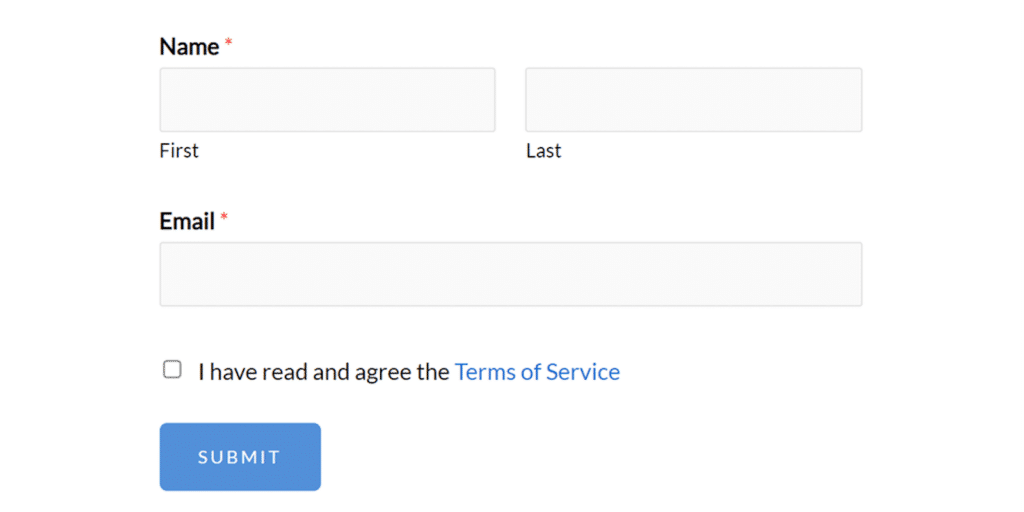
These are a few ways you can provide clarity with your forms:
- Terms and Policies: Link to your terms of service or privacy policy right on the form page. Make sure it’s easy to understand and written in plain language — nobody wants to decipher legal jargon just to know their info is safe.
- Form Descriptions: Briefly explain why you need the information. Something like, “We’ll only use your email to send you cat memes. Promise.” After all, a relaxed visitor is a trusting one.
- Optional Fields: Let people skip non-essential questions so they feel less pressured. People appreciate having control over how much they share. Plus, fewer required fields mean quicker form completion.
By making your intentions crystal clear, you reassure visitors that they’re in control of their own information. And that builds confidence!
3. Make Your Forms Look Legit
Your form design says a lot about your brand. If your form looks outdated or cluttered, it’s like showing up to a job interview in sweatpants.
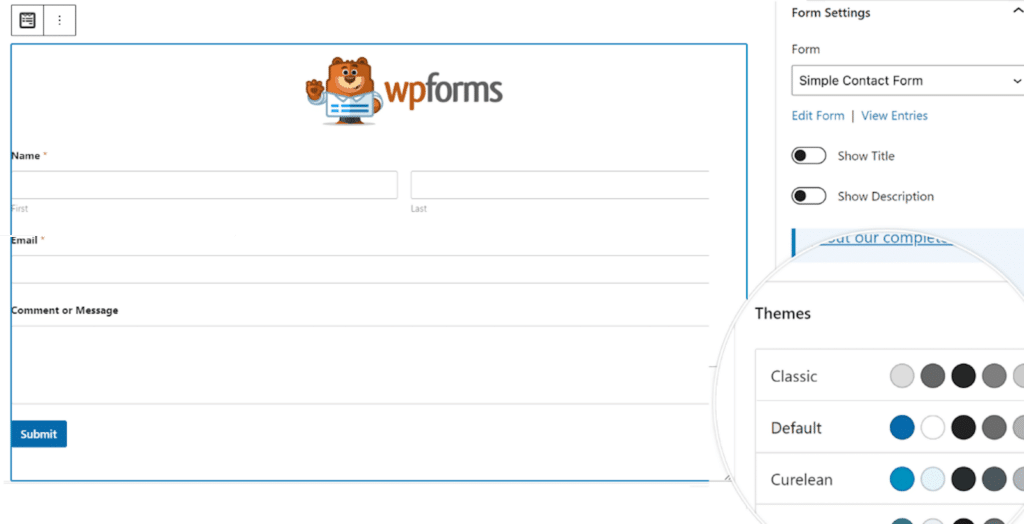
Get those dusty old forms out of here! Make sure your forms are too legit to quit with these tips:
- Use Branded Colors: Match your form colors to your website’s palette. Consistency helps reinforce your brand and makes your forms look more professional. And colors on your form are just plain fun, am I right?!
- Add Your Logo: A small touch that makes a big difference. Your logo acts as a visual cue that reassures visitors they’re dealing with a reputable brand.
- Keep It Simple: Don’t be afraid to remove unnecessary fields and make the form easier to navigate. Streamlined forms not only look better but are also quicker to complete, boosting submission rates.
Modern, professional-looking forms communicate that your business is trustworthy and worth engaging with. Visitors are more likely to hit that submit button if the form looks well-designed and secure.
Want to do it? Read this: The Ultimate Guide to Creating Branded Form Templates
4. Sprinkle in Some Personality
Let’s face it, forms are sometimes boring. But they don’t have to be! Adding a little personality can make your online forms feel more human.
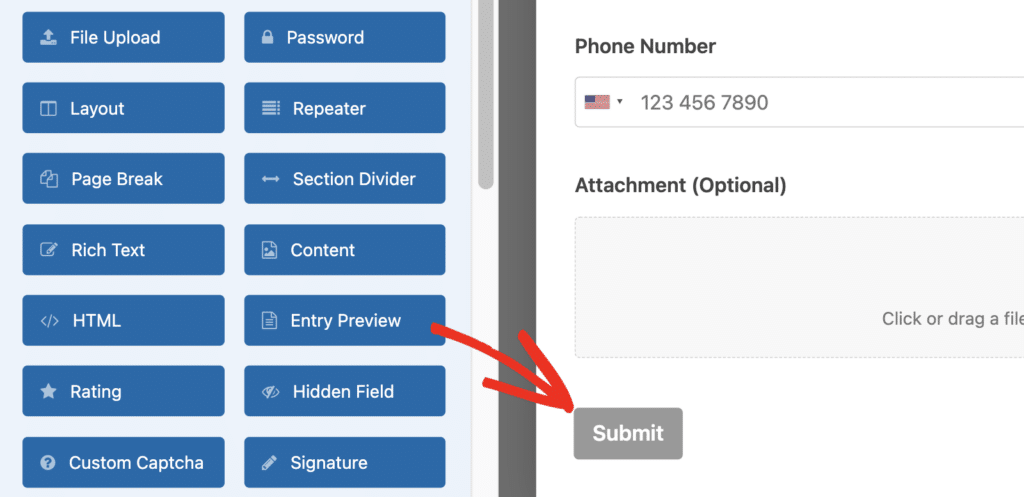
To reassure form users that robots have not taken over your website, try:
- Custom Buttons: Instead of “Submit,” try “Send It!” or “Let’s Go!” by editing the button in the form builder’s Settings tab. Just click the button to get there! It’s a small change that makes your brand feel more approachable.
- Welcoming Headers: Make your form feel inviting with friendly wording. Use the Content field to add headers, text, or media to the top of your form. A warm introduction makes visitors feel welcome and at ease.
- Confirmation Messages: Say something fun like, “Thanks for joining the cool kids’ club!” in your automated confirmation message. A little cheer goes a long way in making visitors feel valued.
When your forms have a bit of charm or humor, visitors are more likely to enjoy the process and feel connected to your brand.
5. Use Trust Signals
Speaking of reassurance, sometimes form users just need to know that you’re not some sketchy operation.

To further prove yourself, you might consider providing:
- Security Fields: Show that data is protected and encrypted by including CAPTCHA fields for secure submissions or badges from reputable security providers.
- Privacy Statements: Remind visitors that their info won’t be sold or shared. Transparency goes a long way in easing concerns!
- Professional Design: A clean, modern design implies credibility. Sloppy or outdated designs can make visitors question your professionalism.
Want to make your own CAPTCHA? Read this: Using Custom Captcha
People want to know that your website is safe and secure before they hand over their info. These trust signals are subtle cues that reassure visitors their data is in good hands.
6. Make the Process Frictionless
Reducing friction means eliminating anything that slows people down or makes them question why they’re bothering in the first place. The easier your form is to fill out, the higher your submission rate will be.
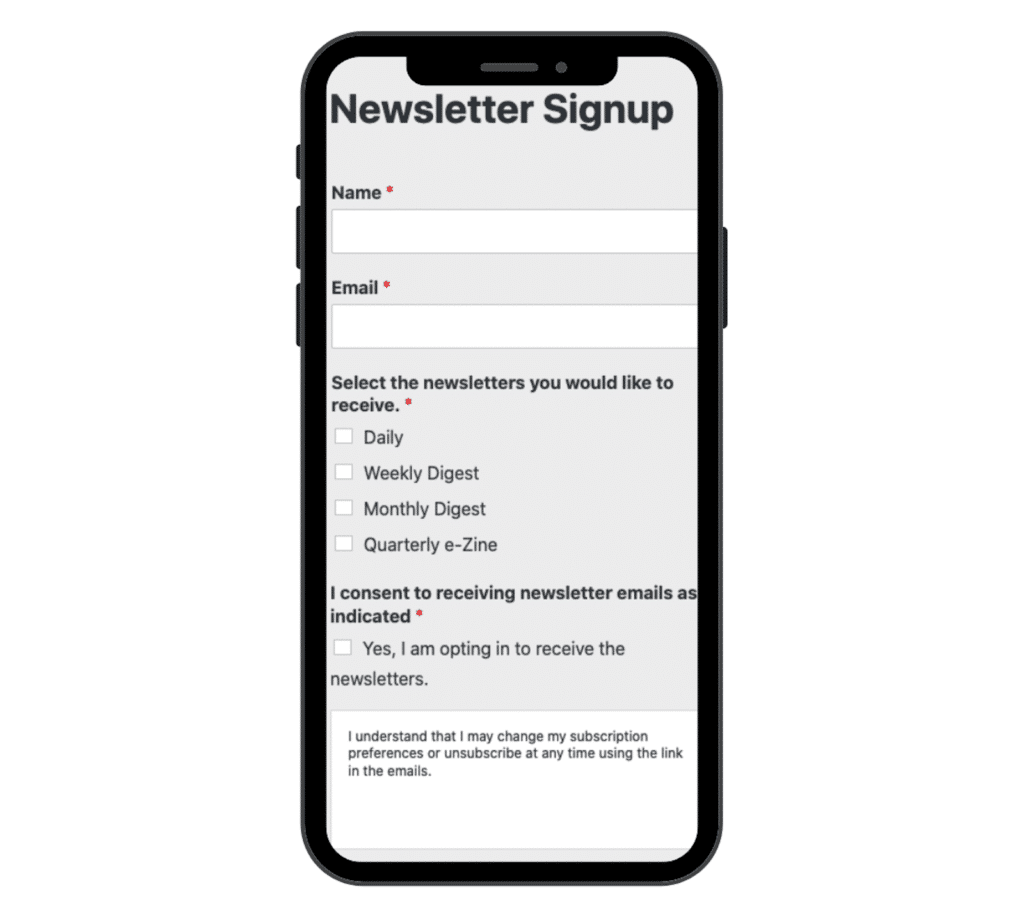
These are the best ways to create frictionless forms:
- Mobile Optimization: Make sure your forms look great and work well on mobile devices. You might consider a single-column layout, for example. If visitors can’t easily complete your form on their phones, you’re losing potential leads.
- Using Conditional Logic: Show only relevant fields based on previous answers. This keeps forms short and personalized.
- Keeping it Short: Only ask for what you absolutely need. Shorter forms are less daunting and quicker to complete.
Nobody wants to jump through hoops to complete a form. Make the process as smooth as possible to keep visitors engaged.
7. Follow Up with Gratitude
Once visitors take the plunge and hit “Submit,” make sure they feel appreciated. Your follow-up messaging is an opportunity to solidify the positive experience they just had with your form.

To show your visitors you’re grateful for their submission, you might consider:
- Thank-You Messages: Add a little humor or a friendly touch. Let your form users know you appreciate their effort and that their submission matters.
- Follow-Up Emails: Send a quick “Thank you! Here’s what happens next.” This reassures visitors that their response didn’t just vanish into the void.
- Incentives: Offer a discount code or bonus for completing the form. Everyone loves a little reward for their effort!
A little acknowledgment goes a long way in building lasting relationships!
Add NPS to Your Wordpress Form Now
Building trust isn’t rocket science (cat science?), but it does take a thoughtful approach to how you present yourself and your forms. By focusing on transparency, social proof, and a little personality, you’ll create a welcoming vibe that encourages visitors to take action.
With WPForms, creating downright charming forms is as easy as pie. Now go forth and build those connections!
FAQ
Take a look at our most frequently asked questions to find specific answers:
Why do I need to build trust before asking for form submissions?
Building trust makes visitors feel comfortable sharing their information. If your website looks credible and transparent, people are more likely to fill out your forms without hesitation.
How can I make my forms look more professional?
Use branded colors, include your logo, and keep the form layout clean and simple. Modern, well-designed forms make your website look polished and trustworthy.
What should I do after someone submits a form?
Always follow up with a thank-you confirmation message and consider sending a follow-up email. Showing gratitude and offering a small incentive (like a discount code) can leave a positive impression and encourage further interaction.
Next, Monitor and Analyze Your Spam
In this article, I showed you how to gain visitor trust so that your form users are completing and submitting your forms. But what about those unwanted submissions — the spam submissions?
There’s actually a way to use this information to your advantage! Take a look at our blog post on how to monitor and analyze spam to get the full scoop.
Ready to build your form? Get started today with the easiest WordPress form builder plugin. WPForms Pro includes lots of free templates and offers a 14-day money-back guarantee.
If this article helped you out, please follow us on Facebook and Twitter for more free WordPress tutorials and guides.

